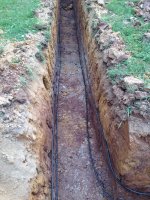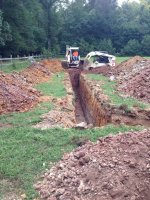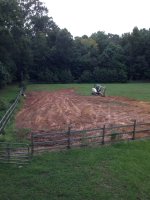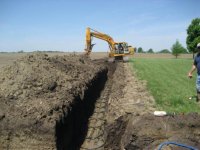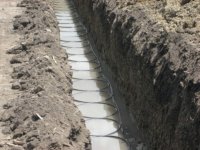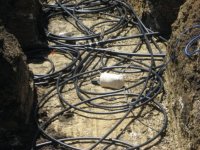Country Geek
Gold Member
Digging has started. 7 trenches, 150 feet long, three feet wide by six feet deep.
When you say that the trenches are three feet wide, it seems like that's not that much... they shouldn't take up too much space, right? Well they don't. It's the spoil piles that take up all the space! In my case the trenches are being dug, piped, and filled one at at time, so the spoil piles won't become a major hindrance to progress.
The mainfold trench and the first geo trench are dug. The first geo trench makes a 90 degree turn to avoid areas pasture which are the result of an unfortunate decision made 15 years ago to bury stumps from clearing in a pit in the pasture. I agreed to that when we were building, and I shouldn't have.
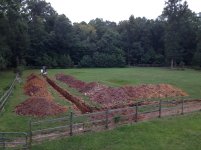
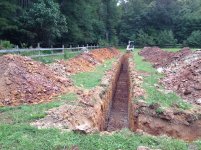
When you say that the trenches are three feet wide, it seems like that's not that much... they shouldn't take up too much space, right? Well they don't. It's the spoil piles that take up all the space! In my case the trenches are being dug, piped, and filled one at at time, so the spoil piles won't become a major hindrance to progress.
The mainfold trench and the first geo trench are dug. The first geo trench makes a 90 degree turn to avoid areas pasture which are the result of an unfortunate decision made 15 years ago to bury stumps from clearing in a pit in the pasture. I agreed to that when we were building, and I shouldn't have.


